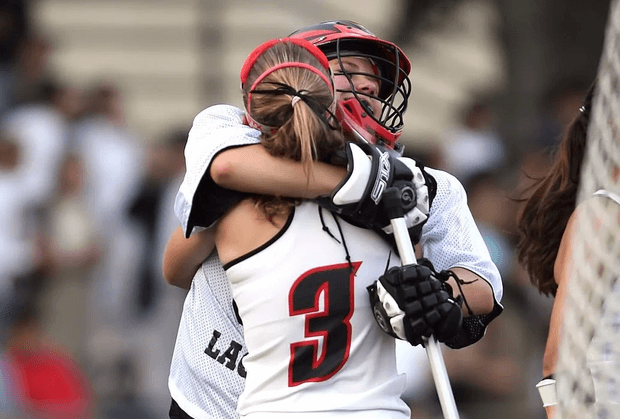
Extra Inning Softball has partnered with former DI softball coach Julie Jones (Akron, Cleveland State) and current Mental Performance and Mindset Coach to help give athletes, coaches and others in the softball world the “Mental Edge.”

Julie spent 26 years leading Division I softball programs with her mission being simple: to build smarter students, stronger athletes and better people.
Today, she also serves as an Adjunct Professor at Ursuline College teaching well-being and performance, mindset training, athletic coaching and career development courses in both the undergraduate and graduate studies programs.
Continuing her work of helping student-athletes reach their goals on and off the field, Julie regularly sends Mindset Made Simple Tips to players and coaches across the country as well as posting them on her site, SSB Performance.
Today’s “Mindset Made Simple” teaches that the brain does not know the difference between real and imagined experiences. Physiologically, it treats them the same.
Therefore, athletes can use visualization in their preparation for performance and, as Julie puts it: “(the ability) to utilize the positive emotions and manage the non-productive emotions can be a game-changer.”
Keep reading below for more (or watch her cover it in the video version on YouTube!):
*****
Six years ago this month, I lost my mom very suddenly.
My parents, along with my sister and her two young children were headed home when my mom fell from an apparent stroke and suffered a traumatic brain injury. Since I was still in Florida, I caught a flight that morning to try to get there while she was still hanging on.
As fate had it, Delta’s computers were down all over the country, and I had to rebook which moved my flight from Lexington to Louisville (she was at UK Medical Center) and I didn’t make it.
It was devastating, to say the least.
Wow, just typing that is still hard. I can take myself back there in an instant and create the most vivid pictures of what I saw along with what I imagined happening in my absence.
Think about it. How easy is it to recreate life-changing moments… the tough ones and the ones filled with joy?
Can you remember the birth of your child, winning the championship or reaching that goal in the greatest of detail?
As I spent last evening recounting the events of six years ago and felt the intense emotions that surround the thoughts and pictures in my head, I began to think about how often we discuss emotion and performance.
Often when talking with my athletes and teams, I talk about overriding our feelings and sticking to facts.
Why?
Because often, our feelings aren’t helpful, particularly when they are connected to worry, anxiousness, past failures or other events that happened in the past or have not yet come to pass.
The bottom line: they often remove or distract us from the present moment. Neither is helpful to our performance.
My reminder is to acknowledge how you feel, think about how you need to feel to be successful and then rely on what you know as opposed to how you are feeling.
Facts = confidence. You know what to do, it often does not matter how you feel about it. You just need to act!
On the other hand, when I am working on visualization with athletes, we first start by taking a long hard look at a still picture.
Why?
Because our brain reacts the same to what we see through our eyes (what we are actually looking at) as it does to what we are looking at in our mind’s eye. Don’t believe me, look at this picture. The first column is a brain looking at an object. The second column is a brain lit up visualizing the object and the third column is the difference between the two when looked at in an fMRI.

BUT… it isn’t just the vividness of what we see that makes our bodies react to what we see in our mind’s eye.
After we look at the detail and then recreate it in our mind’s eye (through visualization), I ask the athletes to think about how they felt in the picture or what emotion that picture creates as they “relive” it.
This emotion IS HELPFUL to our performance.
Why?
Because our brain does not know the difference between real and imagined experiences. Physiologically, it treats them the same.
When I picture the events of August 8, 2016, my body reacts very similarly to how it reacted that day. My breaths get shorter, my heart literally aches and my eyes well up.
I am not there. It is not happening. But it is very real!
When I think of the day my son was born, the same thing happens. When I think of walking into the complex in Detroit when we played for the MCC Championship during my time at CSU and I picture my team with chest high and full of pride before we even walked on the field to win, the same thing happens.
The emotions are different, but the emotions are real, regardless of whether they are categorized as painful or prideful!
All of this is to say, that we are crazy if we are not using visualization in our preparation for performance! We used it when I coached, but I would use it more knowing what I know now!
Why?
Getting our players to use the images they see in their heads and teaching them to utilize the positive emotions and manage the non-productive emotions can be a game-changer.
Think about how powerful our memories can be. Then think about how they can affect our performance – either good or bad – depending on what memories/pictures/emotions we have in our mind’s eye when we are called upon to perform.
If we can learn to use the pictures and emotions of our successes in vibrant detail, we can reclaim that feeling on command. We can then prime our mind and body for the next pitch, shot or play and have that positive emotion coursing through our veins… instead of the nagging doubt, fear or anxiety that shows up so often.
As you start to think about how you can use it, I encourage you to reach out and let me help you build a plan. I know how it goes. We read an article, add things to our practice plan, then we fall back into a “hurry up and get things done mode” because we have so much to do!
That is why you need someone who can provide your athletes with a structure to keep this top of mind!
Over the past six years, I have asked “why?” a million times. Today I hope my “whys” have compelled you to think about how you can encourage your athletes to act regardless of how they feel and, on the other hand, use those emotions to tie themselves to all the good that got them where they are today.
Remember, we are wired to find the problem. We must train ourselves to look for the bright spots.
This tool helps us relive those bright spots and keep them handy so we can pull them out, feelings and all, to prime our brains with what we need to succeed!
To all of you who know how I feel through experience, I send you peace. I still choose to look at the bright spots of being my mom’s daughter, too!
Manage the moment, hug your loved ones and have a great week!
Julie
To learn more from Julie check out her social media sites below; to contact her personally, she can be reached via email at: [email protected]
SSB Performance:
Website: www.ssbperformance.com
Facebook: /ssbperformance
Twitter: @SSBMindset
Instagram: /ssbperformance











